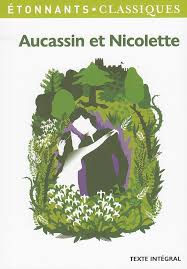Introduction
byIntroduction to Aucassin and Nicolete begins not with lofty claims, but with quiet distinction. This poetic work, unlike many literary relics from the same era, has endured across centuries without losing its charm or originality. Blending prose with verse, it introduces a narrative form called the cante-fable, which doesn’t merely tell a story but performs it. Where most medieval texts lean toward morality tales or courtly grandeur, this piece feels more personal, intimate, and occasionally ironic. It captures not only the romance between two unlikely lovers but also the emotional textures that surround them—grief, joy, confusion, and laughter. Each passage, whether sung or spoken, offers a rhythm that mirrors the unpredictable motion of love and fate. Readers are drawn in not by spectacle, but by the sincerity of tone and depth of feeling.
The structure itself breaks expectations of medieval literature. It uses alternating sections to shift tone and mood without disrupting the storyline, creating a dynamic pace. This stylistic decision may reflect the voice of a wandering minstrel or an author challenging traditional formats. Rather than glorify war or lineage, it centers on Nicolete and Aucassin’s love, treating it with both reverence and humor. Nicolete, who should be a passive damsel in traditional romance, becomes clever, active, and self-driven. Aucassin, though noble by birth, appears more flawed, passionate, and human than heroic. This inversion adds complexity and invites readers to question societal ideals. Romance, here, is not a prize won but a bond tested and chosen again and again.
The author’s cultural awareness is evident in the subtle layering of religious and political contrasts. Nicolete, a Paynim captive, is not villainized, nor is her love for Aucassin depicted as unnatural or corrupt. Instead, their union defies conventional opposition, suggesting that affection transcends belief and background. Humor is used not to undermine love but to protect it from being too idealized. For instance, moments of conflict are sometimes resolved with wit rather than battle. This unexpected levity turns the tale into something more agile and enduring than a mere tragedy or fairy tale. Love becomes a game of persistence, imagination, and will.
Amid all its beauty, Aucassin and Nicolete does not shy away from commenting on social realities. It references the burdens of the poor and the constraints of feudal society. While these are not the story’s focus, their presence sharpens the contrast between the lovers’ dreamlike episodes and the harshness of the world they navigate. Their escape is emotional as well as physical—love becomes their way of resisting conformity. This balance gives the story depth without turning it into a lecture. The emotional arcs feel truthful because they’re laced with social observation, not disconnected from them.
The vivid settings—the palace, the forest, the sea—function not just as backdrops but as emotional states. Each place reflects the lovers’ transitions: confusion in the forest, hope at sea, clarity in moments of reunion. The tale doesn’t promise everlasting stability, but it does affirm the importance of shared feeling and loyalty. The language, though repetitive by design, creates a melodic tone that enhances memory and emotion. Much like epic poetry, it ensures the listener does not just follow the story but feels its cadence. Love, in this narrative, is not static. It moves, adapts, retreats, and returns.
That movement is key to its lasting appeal. Unlike moralistic stories that seek to resolve with virtue or punishment, this one lingers in the in-between. Love isn’t fully rational or rewarded for its purity—it’s just chosen, again and again, in spite of obstacles. The couple’s resilience becomes a gentle rebellion against rules that would keep them apart. It’s not just the plot that charms, but the way it’s told—with sincerity, occasional mischief, and unwavering empathy. The tale ultimately honors love as a lived experience, imperfect but radiant.
In a time where many literary works served religious or heroic ideals, Aucassin and Nicolete embraced a different vision: that of joy amidst difficulty, and meaning found in each other rather than in conquest. Its poetic form, narrative inversion, and playful tone created something rare and enduring. Not simply a relic of the past, this story stands as a bridge between medieval tradition and modern sentiment, where emotion and choice matter more than duty and destiny. In this way, the tale remains alive—not just remembered, but felt.

